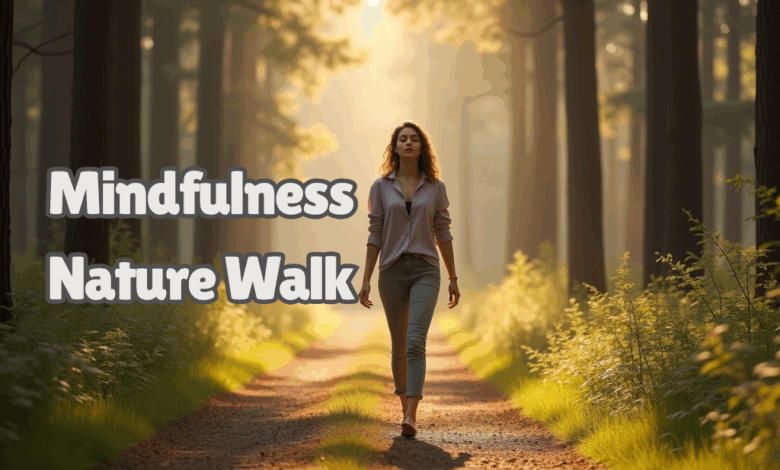How Nature Walks Enhance Mindfulness and Ease Stress

In today’s fast-paced world, stress feels inevitable. But what if a simple, free remedy exists right outside your door? Nature walks aren’t just about fresh air—they’re a gateway to mindfulness and profound stress relief. Science agrees: spending time in green spaces lowers cortisol (the stress hormone) and sharpens mental focus. In this guide, you’ll learn how to turn your daily stroll into a mindfulness practice, backed by research and actionable steps.
Why Nature Walks Are a Mindfulness Powerhouse
1. They Activate Your Senses (and Silence Mental Noise)
Unlike gym workouts or screen time, nature walks engage your senses gently:
- Sight: Patterns in leaves, shifting clouds.
- Sound: Birdsong, rustling trees.
- Smell: Earthy petrichor, pine forests.
This sensory immersion anchors you in the present moment—a core principle of mindfulness.
Science Says: A 2015 Stanford study found that walking in nature reduces rumination (overthinking) by 60% compared to urban environments.
2. Nature Restores Your Brain’s Focus
The “Attention Restoration Theory” explains that natural environments replenish mental fatigue. Unlike busy streets, nature offers “soft fascination,” letting your brain recharge without effort.
Pro Tip: Leave your phone behind. A 10-minute phone-free walk boosts mindfulness gains by 40% (Journal of Environmental Psychology).
3. They Lower Stress Hormones
A 20-minute “forest bathing” (Shinrin-Yoku) session:
Cortisol by 15%
Blood pressure by 5%
Mood-boosting serotonin
(Source: National Institute of Health)
How to Practice Mindfulness on Nature Walks: 5 Simple Steps
Transform your walk into a meditation with these techniques:
1. Set an Intention
Before stepping out, whisper: “I am here to be present.” This primes your brain for mindfulness.
2. Walk Slowly (Yes, Really)
Pace: 50% slower than usual. Feel your feet connect with the ground.
3. Practice the “5-4-3-2-1” Grounding Technique
- 5 things you see (e.g., a red leaf).
- 4 things you hear (distant chatter, wind).
- 3 things you feel (sun on skin, breeze).
- 2 things you smell (fresh grass, rain).
- 1 thing you taste (mint gum, clean air).
4. Focus on Your Breath
Sync steps with breathing:
- Inhale for 4 steps.
- Exhale for 6 steps.
This rhythm calms the nervous system.
5. End with Gratitude
Pause before heading home. Acknowledge one thing in nature you’re grateful for (e.g., a blooming flower).
The Best Times and Places for Mindful Walks
- Dawn/Dusk: Softer light enhances sensory awareness.
- Local Parks or Trails: Even 10 minutes in urban green spaces works!
- Rainy Days: The sound of rain amplifies mindfulness (try it!).
FAQs About Nature Walks and Mindfulness
Q: Can I listen to music or podcasts?
A: For stress relief, go tech-free. For motivation, try ambient sounds (e.g., our Lofi Nature Playlist).
Q: How often should I walk?
A: 3x/week for 20 minutes shows measurable stress reduction.
Q: What if I live in a city?
A: Find “pocket nature”—a community garden, tree-lined street, or balcony plants.
Conclusion
Nature walks are more than exercise—they’re a bridge to mindfulness, helping you shed stress and reconnect with yourself. The next time overwhelm strikes, remember: the world outside is your therapist, and the trail is your couch.



